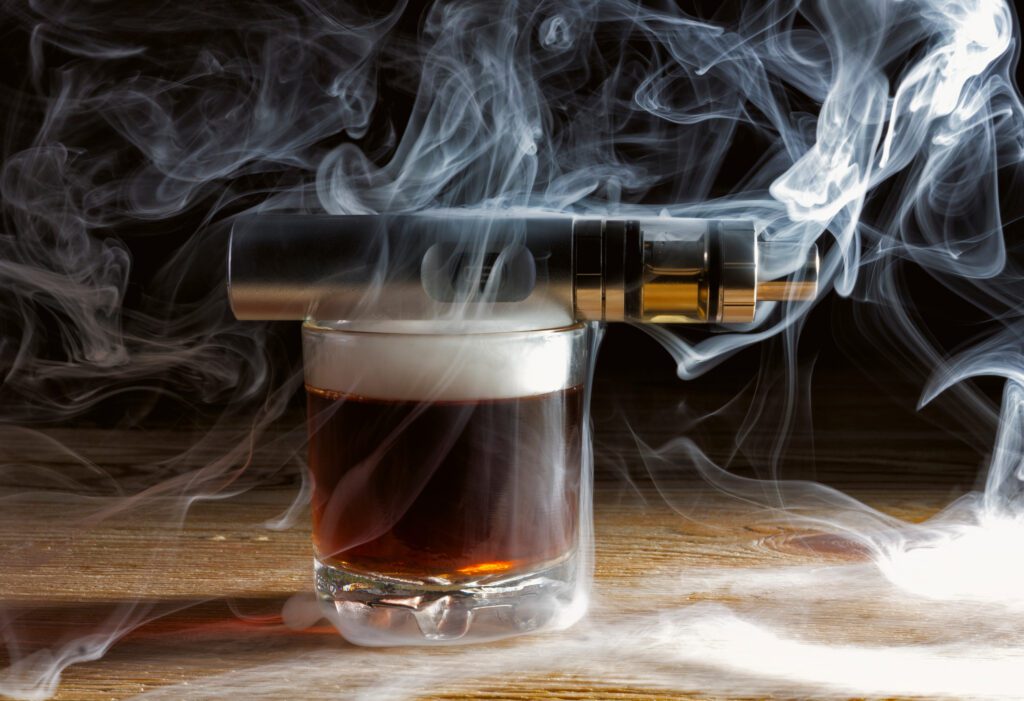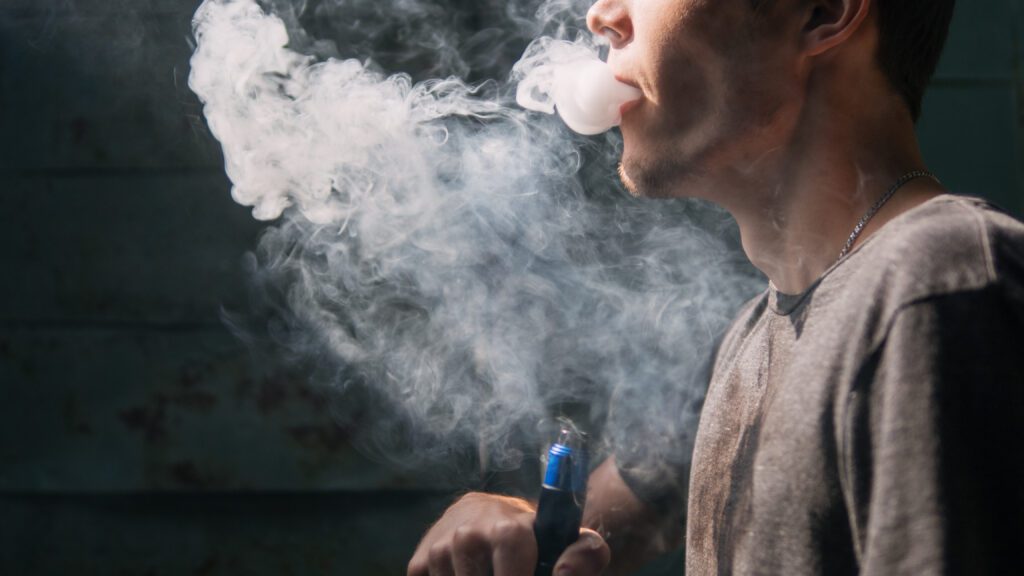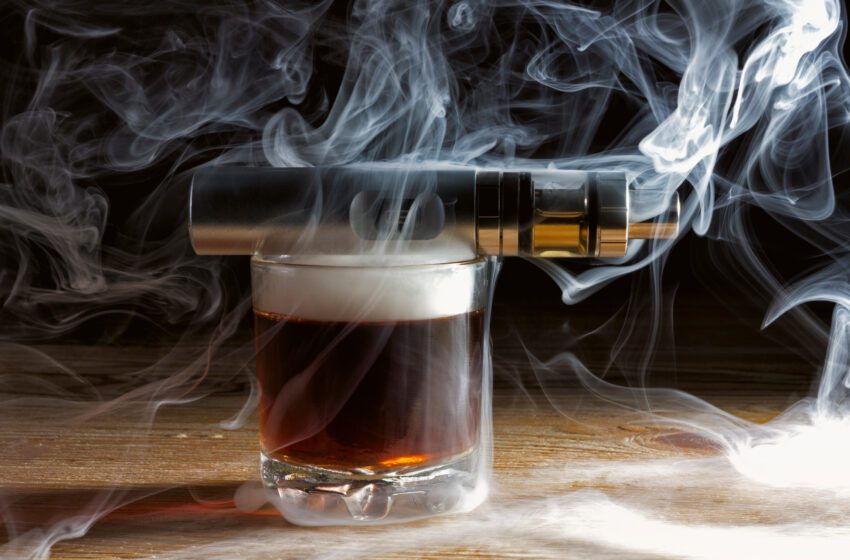
Many in positions of authority ignore alcohol problems and exaggerate vaping issues.
By George Gay
The U.K. Vaping Industry Association (UKVIA) has welcomed, with a few reservations, the publication of a report by the Royal College of Physicians (RCP) that broadly supports vaping as an effective, less risky alternative to tobacco smoking.
This is not surprising because much of what the RCP has to say is in line with what the UKVIA has been saying for some time. Still, it is good to have such a well-respected medical organization on your side, especially given the heft of its 267-page report, “E-cigarettes and harm reduction: An evidence review,” which was published on April 18.

The report looks at several themes, including how e-cigarettes can be used to support more people to make quit attempts while discouraging young people and never-smokers from taking up e-cigarette use; trends in tobacco and vaping use; the effectiveness of e-cigarettes to treat tobacco addiction; the differences in health effects of vaping in people who smoke, vape or do neither; the role of the tobacco industry in the rising use of e-cigarettes; and the ethical dilemmas presented by e-cigarettes.
In responding to the report on April 22, the UKVIA firstly warned the government “not to consider banning flavors as [to do so] would be going against the advice of one of the most eminent and respected medical bodies in the U.K.” I am not sure this is completely true because the report seems to leave enough wiggle room for the government to ban at least some flavors without flouting the RCP advice.
My reading is that the RCP believes that to exploit fully the potential of vaping as a means of encouraging smokers to quit their habit it is necessary in part to allow consumers access to a “range” of flavors. But I think it is calling for more research to try to identify those flavors that are the most efficacious from the point of view of encouraging smokers to quit but also those, if any, that are off-the-scale attractive to the underage.
This is one of the strengths of the report, I believe. For too long, it has been all too easy for commentators to say there is, in respect of vaping flavors, a need to balance the interests of smokers wanting to quit their habit who are attracted to certain flavors and those of the underage who should be discouraged from vaping by restricting the flavors available. Often, the flavors concerned are the same ones, and the commentators never put forward credible ways of finding this balance, which leaves policymakers and, therefore, policies in a state of limbo.
The RCP, while, to some extent, dancing to the same tune about the need for balance, has at least come forward with some better steps, and it will be interesting to see if the government takes up the RCP’s advice or if it blunders on in the normal way. My concern is that with a problematic national election coming up this year or, at the latest, January next year, I cannot see it learning any new steps. More likely, it will continue to put its feet down like ready money.
One reason the RCP can put forward a more credible idea for preventing underage use is that it seems to be aware that the flavors-and-the-underage issue is something of a red herring. It is aware that many underage people take to vaping because they can. As the UKVIA has been saying for a long time and as the RCP acknowledges, the government has slashed the funding for the main agency charged with policing the retailing of such products.
At this point, I should declare that I have not read the RCP report, only the 13-page executive summary, which, as far as I can tell, includes all 54 recommendations of the full report. And there are limits. This brings me to one of my concerns. A 267-page report is impressive, but it is not going to get through to the average smoker, and smokers need to be addressed directly if they are going to be encouraged to quit.

The report will be addressed to other “experts” in the field and perhaps the government, which might or might not follow through on the recommendations, some of which are excellent. But there is no point in having, for instance, a recommendation that smokers be provided with accurate reduced-risk messages if that recommendation sits in a huge report on a shelf gathering dust.
And it must be said that while there have been two previous RCP reports going back 17 years, the intellectual dial of vaping seems not to have been advanced very far. The first report was the 2007 252-page “Harm reduction in nicotine addiction: Helping people who can’t quit” while the second was the 2016 206-page “Nicotine without smoke: Tobacco harm reduction.” In total, with the latest report, that’s 625 pages.
No doubt much of those 625 pages comprises repetition. Still, nevertheless, one wonders how come, with so much intellectual firepower aimed at the subject, U.K. vaping policies are still sometimes a muddle. After all, the RCP reports are just three of what must be a pile of reports that could usefully be used to support Lord Nelson should his current column, like much of the U.K.’s infrastructure, fall into disrepair.
What smokers see by and large are not these reports but the sensational media pieces such as those aimed at stirring up a moral panic about vaping among the young. And unfortunately, such negativity is not confined to the imaginings of journalists. In a 700-word opinion piece in The Guardian newspaper on April 16, the chief medical officer of England, Chris Whitty, had two things to say about vaping.
“In addition, the [tobacco and vapes] bill will substantially reduce the ability of vape companies to market to children, an utterly unacceptable practice.” And “It [the tobacco industry] tries to pass off new tobacco products as ‘safe,’ as it did with ‘low tar cigarettes’ and cigarette filters—but no tobacco products are safe.”
Now I have a lot of time for Whitty, who I believe is a man of integrity, but I think he should reflect on the second of these statements. How does he think this statement will be interpreted by smokers, who are more likely to read it than the 267-page RCP report?
To my way of thinking, many smokers will conclude that on the “evidence” he offers there is no point in switching from tobacco cigarettes to vapes or even nicotine pouches. Is that the message he wants to convey?
He seemingly conflates tobacco products with nicotine products and says that no tobacco product is “safe,” which is true, but then no product is safe, especially alcohol, as I am sure he will be aware.
As a heading in The Guardian had it on April 23, “Record level of alcohol deaths revealed after heavy drinking in pandemic.” “Years of inaction on alcohol harm has led to this, and the heartbreaking thing is these deaths were totally avoidable,” Richard Piper, the chief executive of Alcohol Change U.K., was quoted as saying in The Guardian article. “Our government has the responsibility and the power to put preventative measures in place, including proper regulation of alcohol marketing, clear alcohol labeling and a minimum price for a unit of alcohol.”
But the government does not take such action because hypocrisy rules. The first of the major findings described in a press note announcing an April 25 report by the World Health Organization, “A focus on adolescent substance use in Europe, Central Asia and Canada,” stated, “Alcohol is the most frequently consumed [illicit] substance among adolescents, with 57 percent of 15-year-olds having tried alcohol at least once and nearly four in 10 (37 percent) indicating they’ve consumed alcohol in the past 30 days.”

The press note goes on to say, “Roughly one in 10 (9 percent) adolescents across all age groups have experienced significant drunkenness—being drunk at least twice—in their lifetime, a rate that alarmingly climbs from 5 percent at age 13 to 20 percent by age 15, showcasing an escalating trend in alcohol abuse among youth.
“Furthermore, recent patterns reveal that the incidence of drunkenness within the past 30 days also increases with age, jumping from 5 percent among 13-year-olds to an alarming 15 percent among 15-year-olds, highlighting an urgent need for targeted intervention strategies to curb this growing issue of underage drinking.”
And just in case it is pointed out that the WHO report covers a wide geographical area that might not correctly represent the situation in the U.K., the report says, in part, that with respect to “lifetime” use of alcohol, the “United Kingdom (England) reported the highest prevalence for 11-year-olds (35 percent for boys and 34 percent for girls) and 13-year-olds (50 percent for boys and 57 percent girls).”
With respect to current alcohol use, the report says that “At age 13, it ranged from under 1 percent of boys and girls in Tajikistan to 32 percent of boys in Bulgaria and girls in [the] United Kingdom (England).”
But nothing will happen in the U.K., at least nothing that will be aimed at curbing alcohol use because most people are not interested in the health of young people to the extent that they would inconvenience themselves to help them. You will not find health advocates saying that a balance needs to be sought between allowing adults to get off their heads on alcohol and protecting young people from the harms caused by alcohol to developing brains.
Moreover, in the U.K. in recent years, young people have been uncaringly plunged into poverty, hospitalized with malnutrition and forced to attend collapsing schools in areas with appalling levels of pollution. Hypocrisy rules.
The government, which has been promoting alcohol through its taxation policies, is not alone. The Guardian, which is totally po-faced when it comes to smoking and vaping, also promotes drinking. On May 4, shortly after it had covered the WHO report, it carried a story taking up two-thirds of a page titled, “Sparkling form: Pet nat goes from hipster bars to M&S [a major, up-market food and beverage retailer].”
I shall quote only the final sentence of the story, which was accompanied by a large picture of young people drinking and laughing, “The funky labels and crown caps have made Pet nat a hit with younger drinkers, and, according to Beames [a wine manager], opening a bottle of Pet nat is less formal, more fun.”
What is meant by “fun” here, I wonder? Drinking alcohol can lead to mental and physical incapacities, fights, car crashes, pedestrian deaths, domestic abuse, crime in general, you name it—none of which can be laid at the feet of vaping.
And it is clear the WHO is not interested in going after alcohol; it is on the trail of eliminating vaping. If you read its report, after the key findings and the introduction, you will see that the first of three quotes made hugely visible against brightly colored backgrounds has nothing to do with alcohol, even though alcohol is identified in the report as the main problem; it is about vapes: “I think the biggest health concern facing young people today is vapes. I think that they should either make vapes less accessible, take the nice flavors out of them or ban them (Girl, Ireland).”
You will look through the report in vain for a highlighted quote on alcohol, but there is another on vapes and one on “addiction illnesses.”
Why, I wonder, are so many people in authority seemingly willing to ignore the problems caused by alcohol while making up problems in respect of vaping? I am fast concluding that most of them have drunk too much and lost too many brain cells in the process.
Finally, I think it is a shame that the RCP, in a report that, while somewhat repetitious, provides much food for thought, finds it necessary to attack the tobacco industry for being “self-serving,” an accusation that can be leveled at every industry, business, individual and organization—even, heaven forfend, the RCP and me.
The 13-page executive report references “research” 20 times and 10 times to say that more of it is needed. And yes, I think each piece of research should be covered by a story in Vapor Voice written by me.

